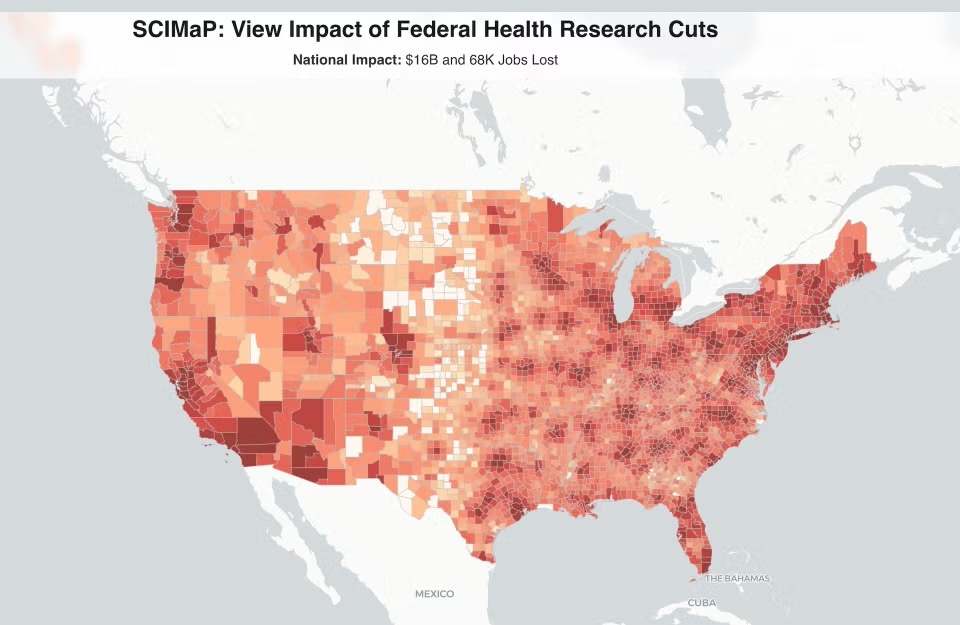Originally published April 9, 2025 by Meredith Rovine and Mandira Banerjee for Penn Today
Data-driven map shows local economic impact of cuts to federal funding for health research
(Image: Courtesy of Annenberg School for Communication)
The Science & Community Impacts Mapping Project (SCIMaP) communicates how proposed federal funding cuts lead to reduced economic activity and job losses nationwide. The SCIMaP team’s analysis of across-the-board reductions to research infrastructure support for National Institutes of Health (NIH) grants, known as indirect costs, shows an estimated $16 billion in economic loss and 68,000 jobs lost nationwide.
“The NIH funds crucial research to address leading health problems like cancer, diabetes, dementia, heart disease, infectious diseases, mental illness, and more,” says Alyssa Sinclair, Joan Bossert Postdoctoral Fellow at the Annenberg Public Policy Center and co-lead for the project. Sinclair, who is also a postdoctoral fellow at the Communication Neuroscience Lab at the Annenberg School for Communication (ASC), added that research innovations have a big impact on our daily lives. “Research innovations directly improve our daily lives by curing and preventing diseases, unlocking new technologies, and improving the safety of our food, water and environments.”
“Medical and scientific breakthroughs supported by the U.S. government impact all our lives,” says Emily Falk, professor and vice dean of ASC. “Research innovations are at the core of many things that enhance our daily lives and keep us safer.”
She added that the U.S. government’s investment in research has made the nation a leader in the world. “SCIMaP shows what’s at stake for local economies and the future of innovation in our communities,” says Falk.
This story is by Meredith Rovine and Mandira Banerjee. Read more at Annenberg School for Communication.

